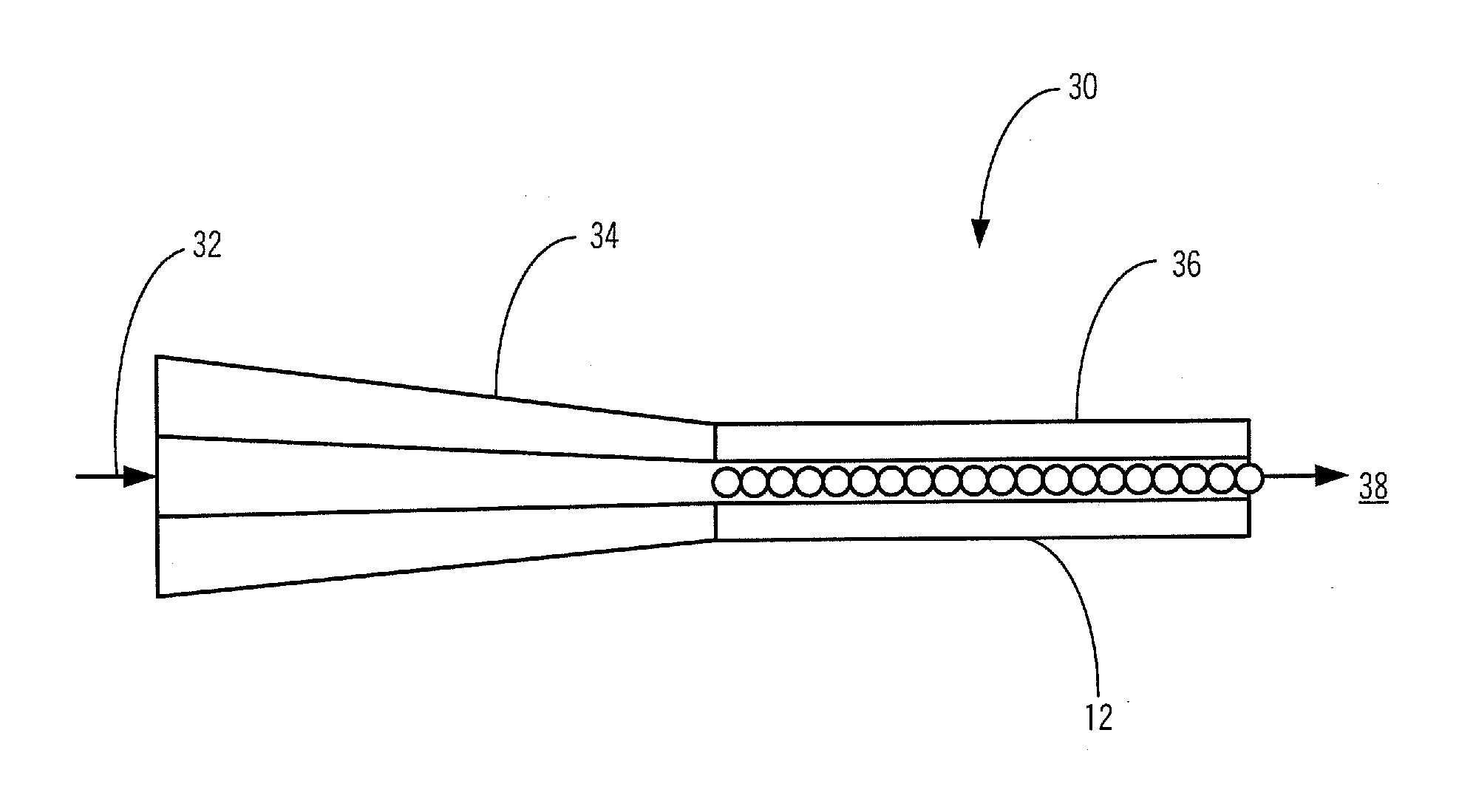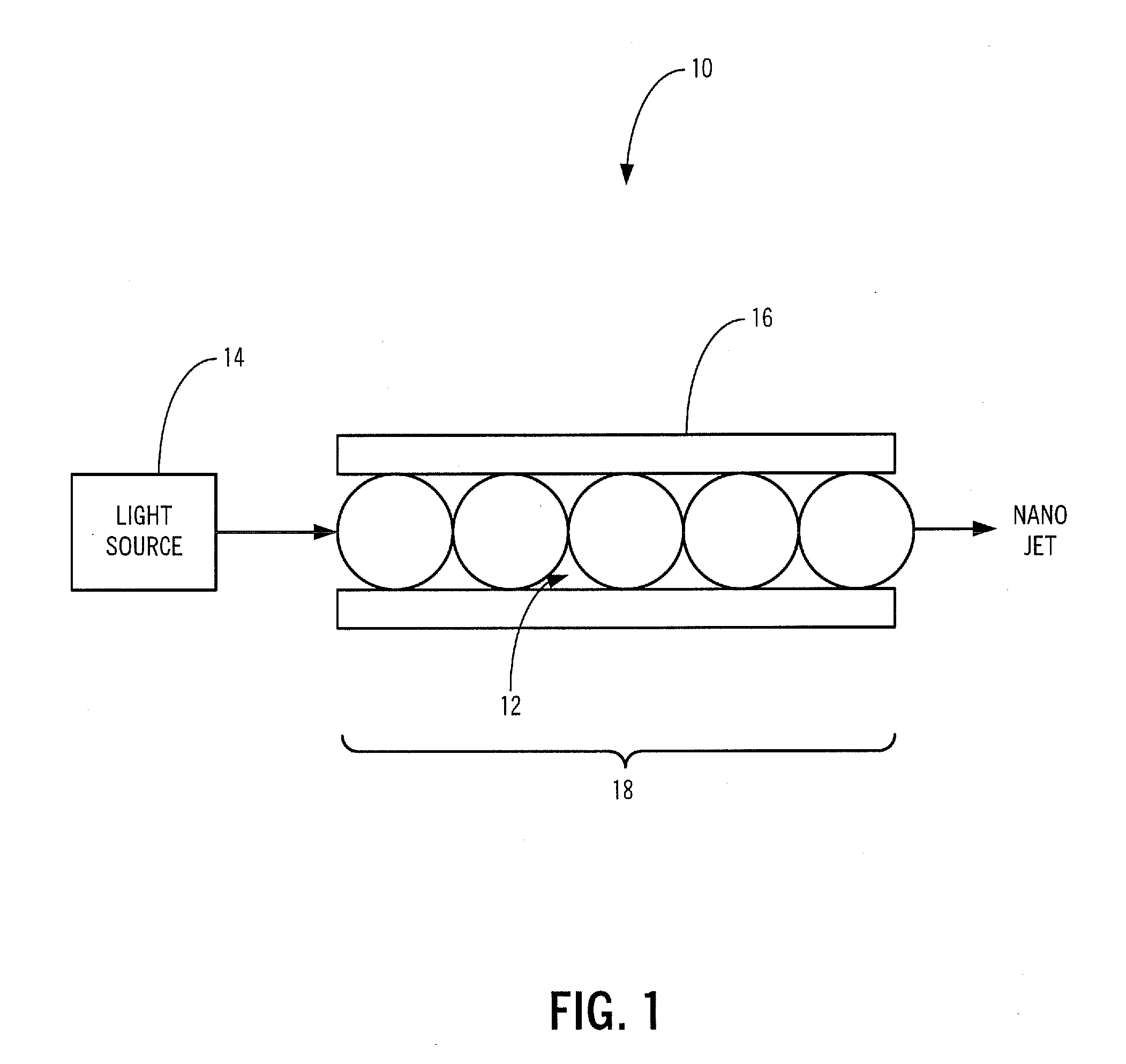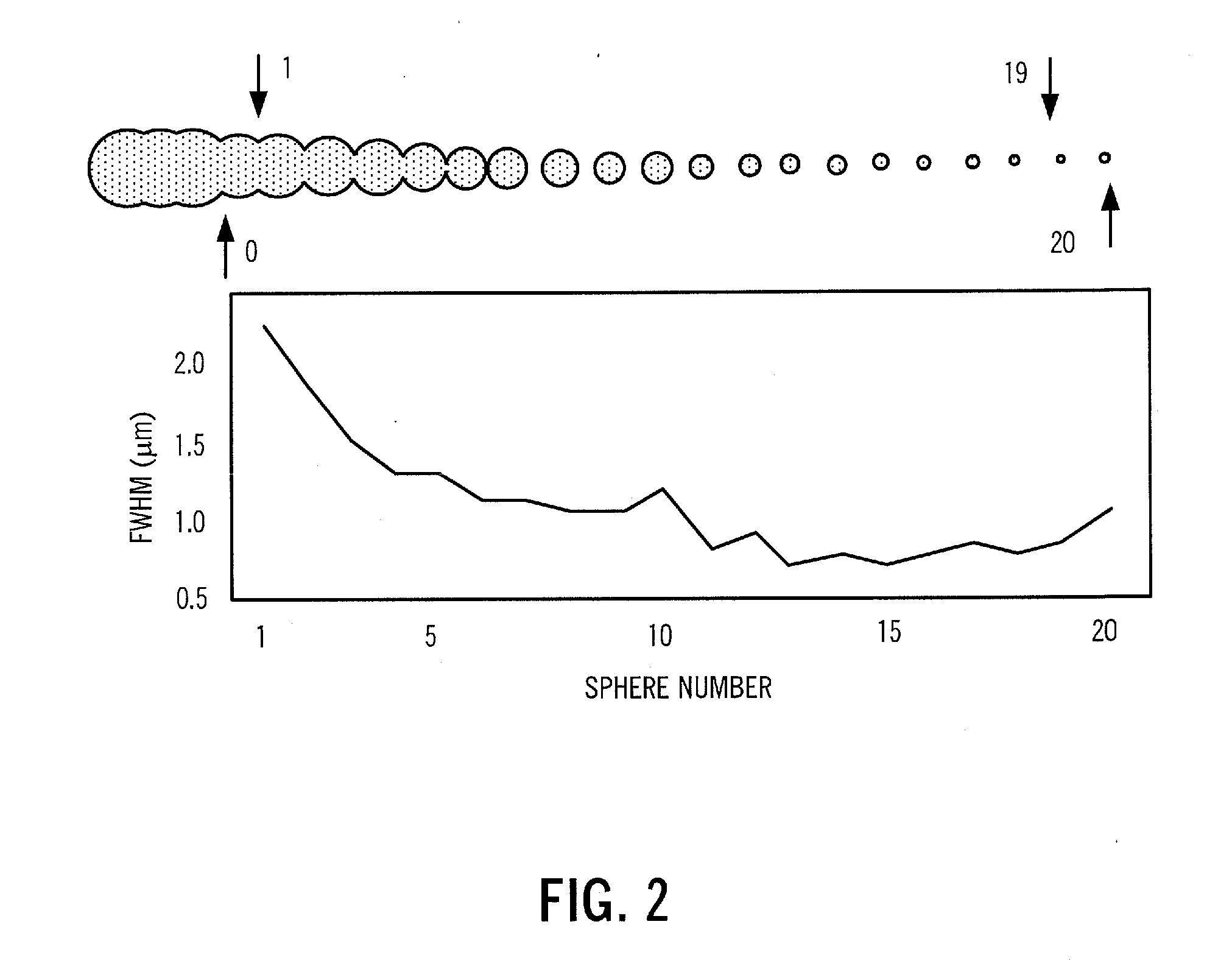Focusing multimodal optical microprobe devices
a multi-modal, optical microprobe technology, applied in the field of optical microprobe devices, can solve the problems of high resolution of existing near-field optical microprobes, difficult task of developing compact light-focusing tools for photonics and biomedical applications, and low optical throughput, so as to achieve efficient coupling of radiation sources, high spatial resolution, and high optical throughput
- Summary
- Abstract
- Description
- Claims
- Application Information
AI Technical Summary
Benefits of technology
Problems solved by technology
Method used
Image
Examples
Embodiment Construction
[0023]In accordance with the devices and methods of the present invention, the teem “optical microprobe” is defined as an instrument that is capable of selectively applying a stable and focused beam of light or other radiation to a small scale portion of a sample in a directed manner for modification, analytical, or other purposes. It is variously also referred to herein as a “focusing multimodal microprobe.” These and all similar terms should be considered to be synonomous.
[0024]Referring to FIG. 1, in one exemplary embodiment of the optical microprobe 10 of the present invention, a plurality of transparent or semitransparent small scale spheres, cylinders, or the like 12 of the same or varying size and the same or varying index of refraction are used to focus a beam of light or other radiation selectively emitted by an optically coupled radiation source 14. Preferably, these spheres or cylinders 12 each have a diameter of between about one wavelength of light and several thousand ...
PUM
 Login to View More
Login to View More Abstract
Description
Claims
Application Information
 Login to View More
Login to View More - R&D
- Intellectual Property
- Life Sciences
- Materials
- Tech Scout
- Unparalleled Data Quality
- Higher Quality Content
- 60% Fewer Hallucinations
Browse by: Latest US Patents, China's latest patents, Technical Efficacy Thesaurus, Application Domain, Technology Topic, Popular Technical Reports.
© 2025 PatSnap. All rights reserved.Legal|Privacy policy|Modern Slavery Act Transparency Statement|Sitemap|About US| Contact US: help@patsnap.com



